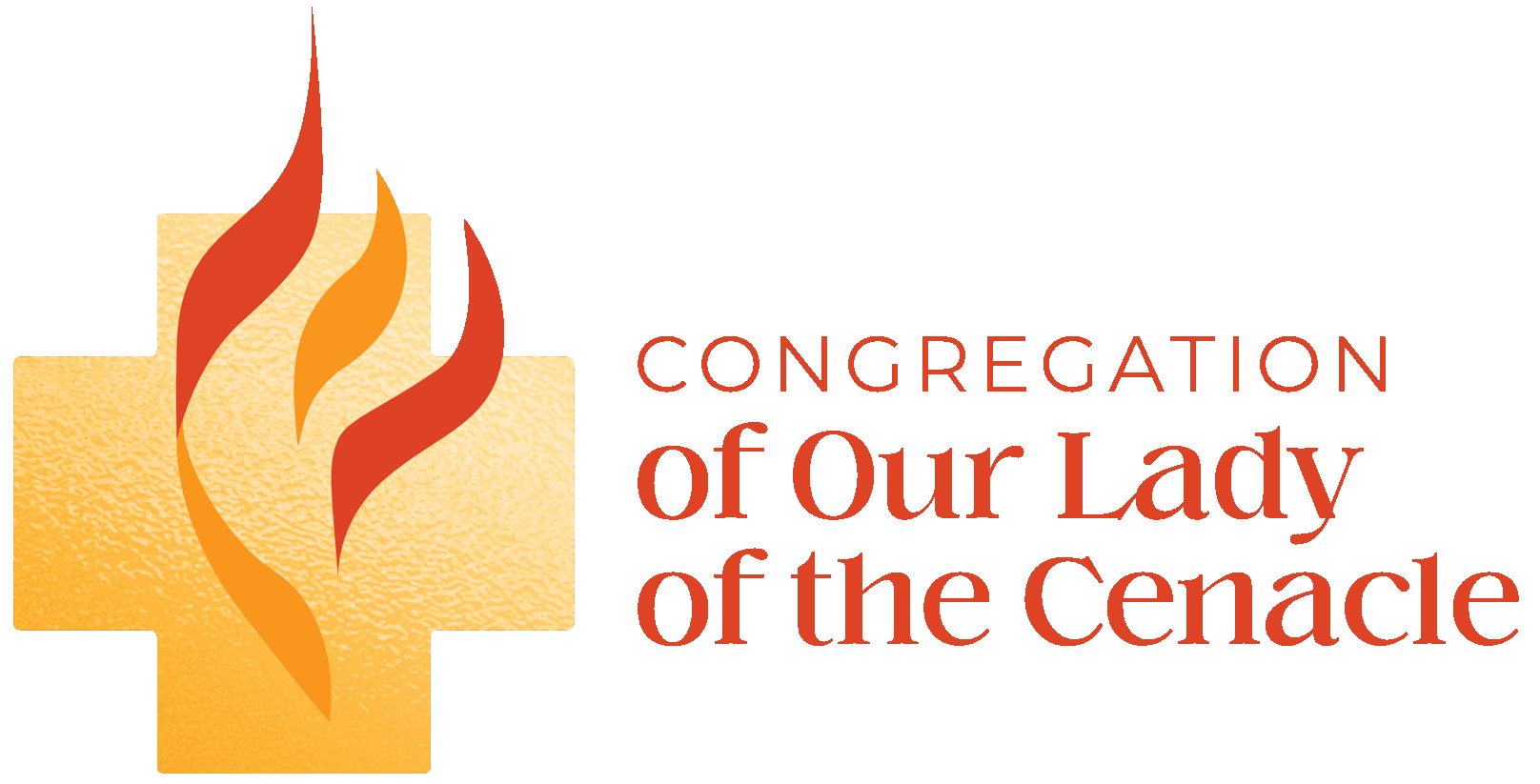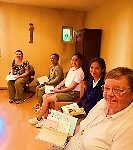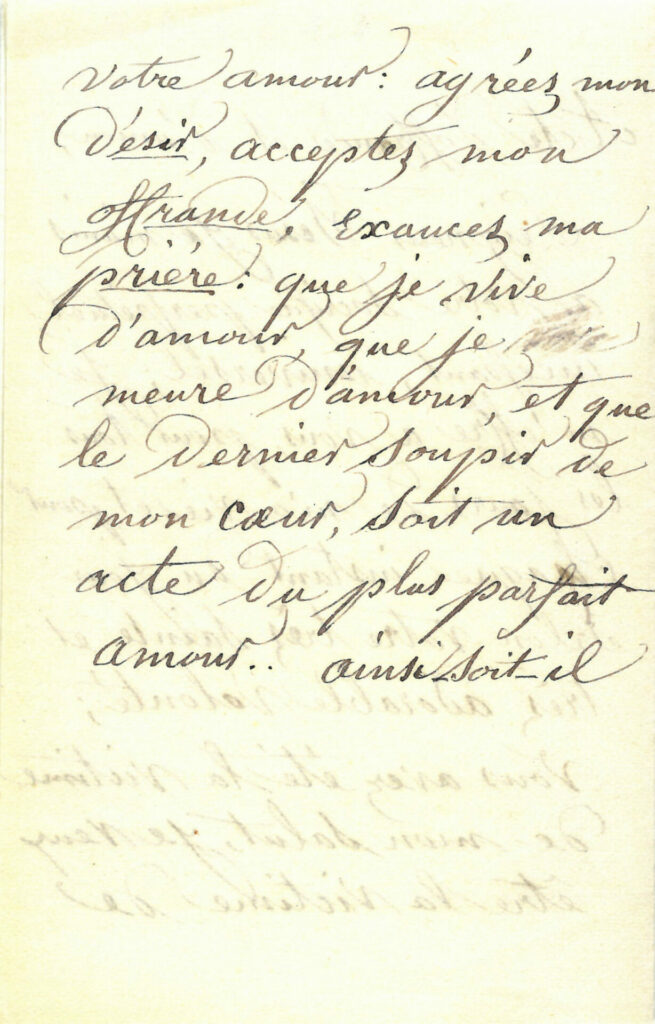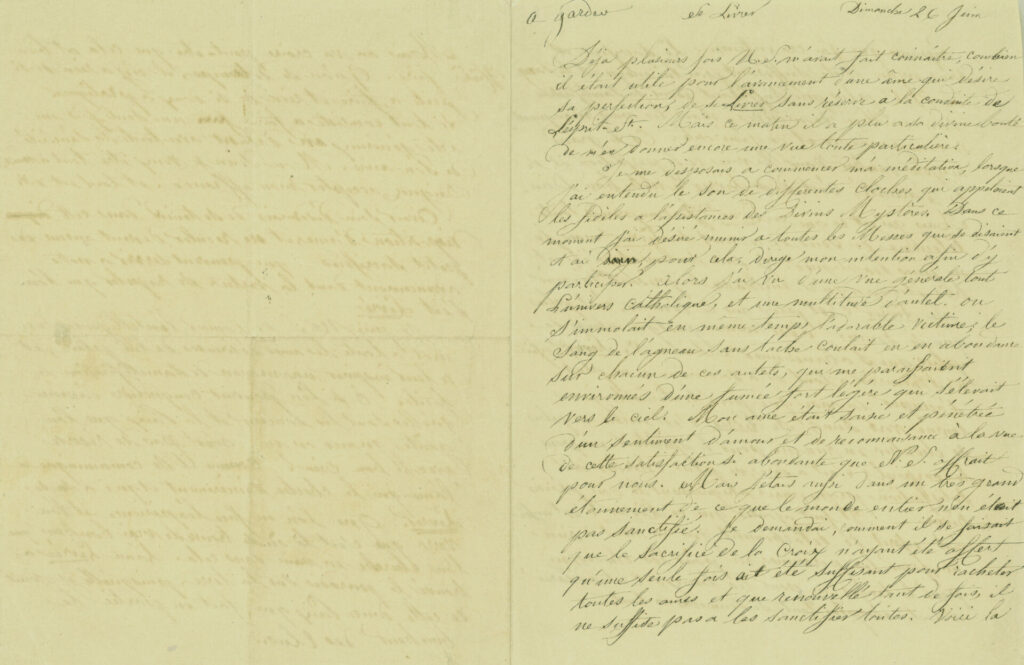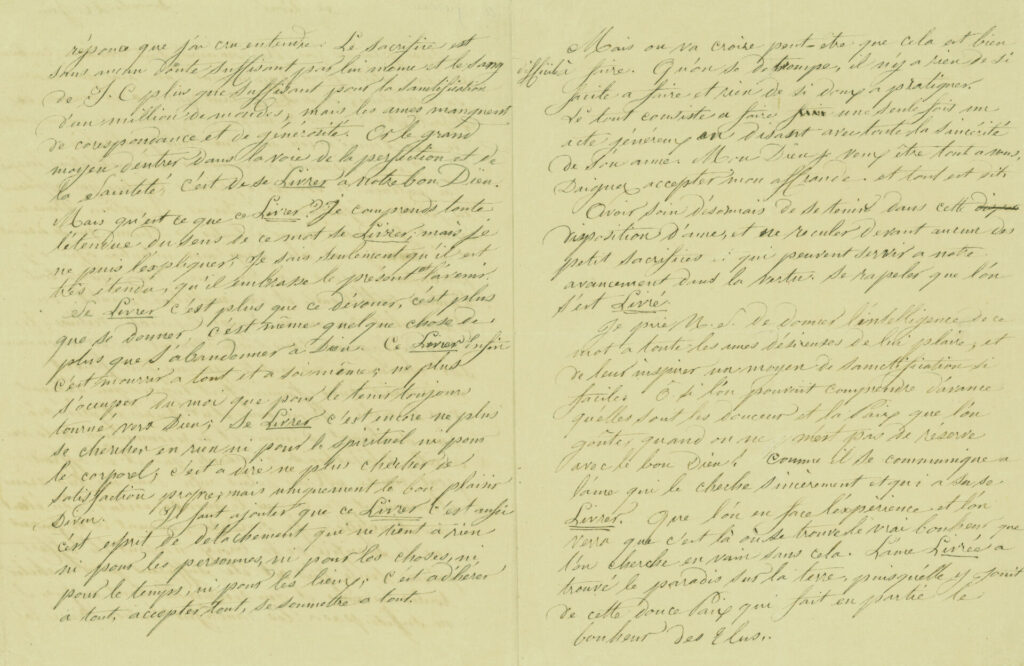“…when they reached the city, they went to the upper room where they were staying… With one heart all these joined constantly in prayer, together with some women, including Mary the mother of Jesus, and with his brother”
Acts 1:13-14 (NJB)
The Cenacle, the place where the first assembly of the apostles gathered together with Mary and the women after the Ascension of the Risen Christ, is considered the birthplace of the church. It also gives us a paradigm of church as the body of Christ giving us a renewed understanding of what it is to be the People of God in today’s world, a synodal church.
The mystery of the Cenacle is both a symbolic place and a theological space, which reveals its ecclesiological meaning and the place of synodality in it. It is within this active and receptive faith in Jesus Christ, Crucified and Risen from the dead, that the mystery of the Cenacle comes into being.
The Cenacle as a Symbolic Place
.The rich meanings attached to the term, Cenacle, based on both Latin and Greek (cenaculum and kataluma), give reference to the word not only as a room for the meal, but also as an important gathering place of the disciples at key moments in their history with Jesus (Cote, 32). It is also understood as a guest room, a place for resting where one stops during a voyage, a place for refreshment and recovery, as well as a place of interiority (Cote,33). The term, Cenacle, thus assumes the symbolism of a dwelling place, recalling the first Cenacle and the events which made it a meeting place of God with God’s people (Cote, 33).
The Cenacle as a Theological Space in a Synodal Church
.The word, “space” contains existential, symbolic, and metaphorical meanings. Theological reflections about space and place provide a deep challenge and an urgent necessity for theology to become aware not only of its embeddedness in the existential spatiality of life but also in the symbolic and spiritual realms of life. Theological spaces can be both physical and metaphorical, providing a setting for spiritual growth, community building, and the deepening of religious understanding. .
The Catholic Church today, is experiencing a breakthrough into a fuller stage of self-understanding, and of self-appropriation as the Body of Christ, known as “synodality” (Roper, ACR 95:412). According to the International Theological Commission, the broader meaning of synodality contains three key metaphors or elements: journeying, creativity, and responsibility, indicating the path along which the faithful walk together as followers of Jesus in their ongoing journey as the people of God.
Theological Insights from the Cenacle Experience
..Adapting the concept of “third space”[1], a sociocultural term designating a communal space, the Cenacle as a “third space” becomes a sphere or forum where individuals can experience a transformative sense of self, identity, relationships, belongingness, and shared faith. For Mary and the women as well as the apostles gathered together at the first assembly, the Cenacle became like their “third space”. As we reflect on the mystery of the Cenacle as a third space, the following theological insights are evoked.
.
1. Birthing: A Beginning
The symbolism of giving birth must not be lost as it gives us deeper insight about the new body of Christ, the church. The birthing experience is not only a powerful metaphor for a beginning, it is also a reminder that growth and transformation often come with pain and struggle, and even confrontation with death. Jesus, in his last discourses in John’s gospel, refers to this metaphor when he said: “A woman in childbirth suffers, because her time has come, but when she has given birth to the child, she forgets the suffering in her joy that a human being has been born into the world” (Jn 16:21). It was important that Mary and the women would be present at the birth of the church as they would have a greater understanding of this based on their experience of childbirth and what it means to bring forth new life. More importantly, Mary is there at the Cenacle, always expecting the Lord, an attitude of active response-ability that gives birth to both the possible and the impossible. The Cenacle is her place, because, thanks to the Spirit, a new body is again to be born for the world (Cote, 79).
2. Remembering as a way of being in solidarity
The importance of memory in faith’s understanding and in Christian experience now becomes clear. To possess a memory is to have a place in which to be rooted, a place from which to heal and to grow, a grounding from which coherence and understanding comes. The constructive nature of memory, whereby elements of a prior experience are woven back together during recollection, also supports imagination, whereby elements of disparate prior experiences are woven together in novel ways (Schacter, et. al, 2012, Neuron 76, 677–694). Those gathered at the Cenacle were engaged in remembering their experiences of Jesus with Mary providing them with vital memories and insights of Jesus from his incarnation to his passion, death and resurrection. This process helped them confront their fears and experience solidarity in the midst of their vulnerability to become one as a body.
.
3. Being “with one heart”
This expression “with one heart,” refers to the bond of Christian love that united all those gathered as one community. In primitive human language, the heart designated the whole person, body, and soul, and signified its most intimate centre. All human faculties find their harmony and unity in the heart.
Pondering thoughts and words in one’s heart, as Mary did (Lk 1:66; 2:19), means to value the experience deep within oneself with a profound awareness of the various movements of one’s person that elicit a faith-filled response. Thus, there is a clear parallelism between the birth of Jesus where Mary conceived Jesus while she was in prayer, and the birth of the church while the disciples with one heart joined constantly in prayer with Mary.
.
4. Praying, Listening and Discerning: “…all these joined constantly in prayer…”
Through prayer and contemplation, and the sharing of faith with one another, the Spirit of God enables us to feel with God and to share God’s attitudes, values, feelings, and emotions. Our capacity to see from God’s perspective enables us to see the events of our time as God sees them and to feel the same way about these events as God feels.
To discern individually or as a body, prayer awakens in us the capacity to identify the spirits that inhabit us at a given moment in our life or history. These various movements of the heart are sifted in order to know its origins and directions—are these from God, leading to God or from the opposing spirit leading away from God?
It is interesting that contemporary French artist popularly known as Arcabas depicts Mary— in many of his paintings on the Pentecost scene —with an open book, either holding it or having it placed beside her or at her foot. For him, the open book symbolizes Jesus, the Word of God, and Mary constantly connected with “the Book,” constantly discerning the Spirit. Arcabas also made sure that in his Pentecost paintings, there were women and people from different races present to symbolize the inclusivity and universality of the church.
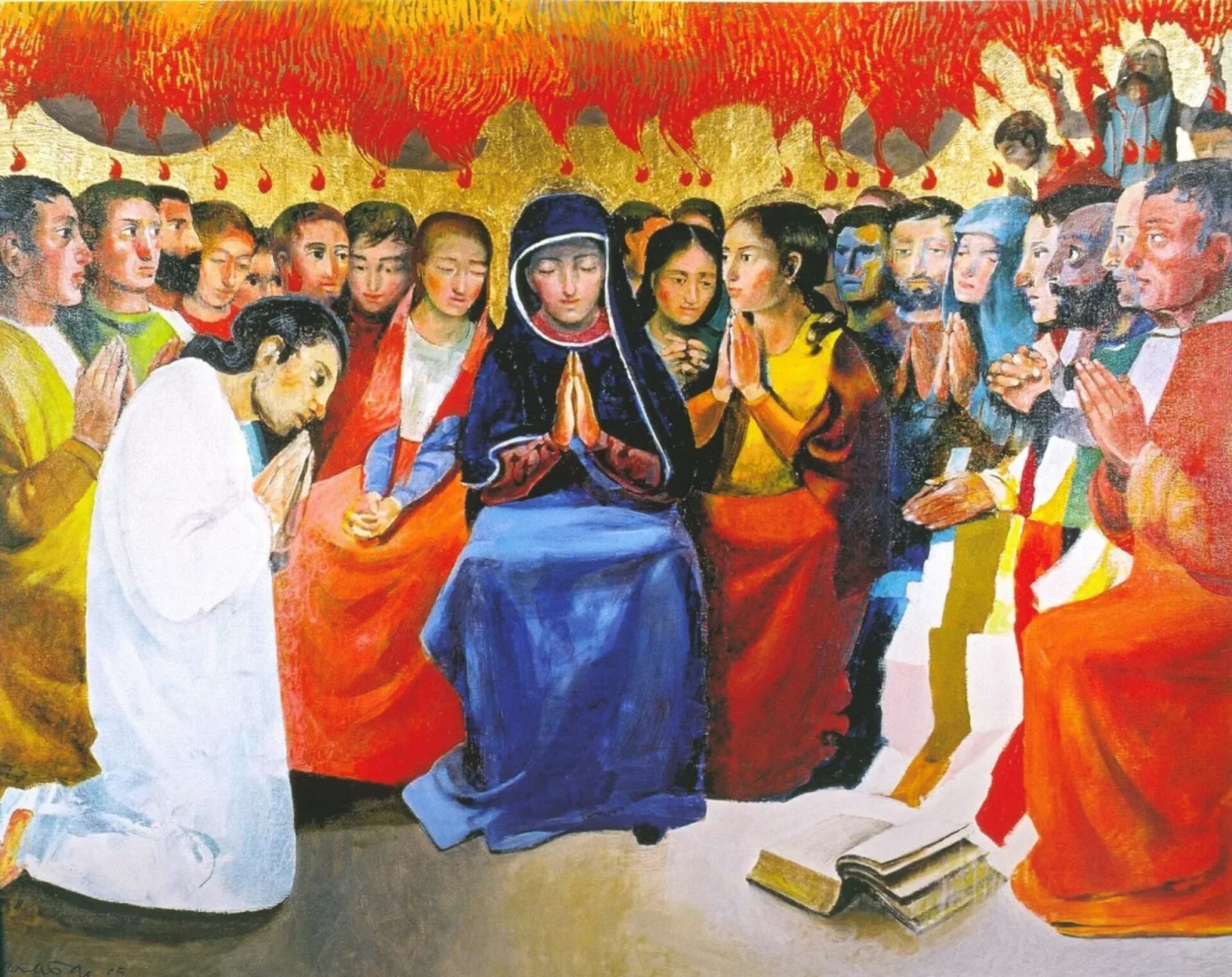
Pentecost, by Arcabas whose real name is Jean-Marie Pirot: December 26, 1926 – August 23, 2018. Above painting was installed in 2005 at the Cenacle in Lyon, France.
.
5. Being in Communion and in Mission
The concept of communion (koinonia) expresses the core mystery of the Church as It gives witness to a community that lives through the sharing of gifts and charisms inspired by the Spirit as an expression of God’s saving plan for the universal community (Markey, 22). The first assembly gathered at the Cenacle was convened by the Spirit for the sake of mission. Being in communion and in mission complete each other in our missionary journey. Synodality must therefore be interpreted more fully in terms of communion, as a way of journeying together as a community of faith along the missionary path. “This understanding of ecclesial life is a key metaphor for the paradigm of synodality and provides the many aspects of journeying as appropriate to Christian corporate living: planning, dreaming, packing, worrying, walking, conversing, listening, observing” (Roper, 416).
Mary and the women in the synodal model of Church
The synodal model of the assembly at the Cenacle is one that must undergo a renewed understanding. In the formation of a synodal church, Mary and the women played significant roles in various ways however limited. In the Cenacle, the roles of Mary and the women in the synodal space of the infant church can be gleaned in the following:
.
1) As witnesses to Christ’s teachings: Mary and other women who followed Jesus during his ministry were witnesses to his teachings, miracles, and his resurrection.
2) As in the culture at that time, the women also played a supportive role during synodal gatherings: providing hospitality, logistical support, and contributing to the overall well-being of the community members during these gatherings.
3) They were not passive observers, but active participants in the Church: They were part of the wider group that came together to pray and discern the Church’s direction, especially after Jesus’ ascension.
4) They became symbols of discipleship and devotion: Mary’s unwavering faith and commitment to Christ served as a symbol of discipleship and devotion for the early Christians.
5) They gave witness as examples of leadership and faith: Some women in the early Church, like Phoebe, Priscilla, Junia and Lydia, were recognized for their leadership and contributions to the Christian community, some alongside their husbands as in the case of Priscilla and Junia, in teaching, mentoring, and supporting others in their faith journey.
.
Pope Francis at the conclusion of the first session of the Synod of Bishops commented on his dream of a synodal church: “This is the church we are called to ‘dream’: a church that is the servant of all, the servant of the least of our brothers and sisters; a church that… welcomes, serves, loves, forgives; a church with open doors that is a haven of mercy” (Oct. 29, 2023).
.
Conclusion
We know that there is still much to be done to realize more fully the dream of a synodal church according to the plan of the Holy Spirit. Dreams are realized in time even with unexpected twists and turns of events in human history. Synodality is giving us hope that as we reclaim the important counter-cultural contribution of Mary and the women in the early church, we can do our part in our own places and spaces of mission.
The Cenacle as a synodal space during the founding of the first Christian community can be likened to the “third space” of today, where there is opportunity to listen to the voices of each other to grow in understanding the different perspectives brought into focus by a community of faith. It is a space of birthing, of listening, of prayer and discernment. It is a space of communion and mission as in the first Cenacle.
.
Judette Gallares, rc
.
This article is a condensed version of a speech by Sr Judette: “Mary and the Women in the Synodal Model of Church in Acts”, June 28, 2024, EWA XI: Ecclesia of Women as Synodal Third Space, June 26-30, 2024, Vila São José, Macau (China)
.
.
BIBLIOGRAPHY.
Côté, Ghislaine, RC. The Cenacle: Its Christological Foundations and Its Spirituality . Paris: Beauchesne, 1991.
International Theological Commission (ITC). Synodality in the Life and Mission of the Church.
Markey, John, OP. Creating Communion: The Theology of the Constitution of the Church. New York: New City Press, 2003. .
Pope Francis. “For a Synodal Church: Communion, Participation, and Mission.” Vademecum for the Synod on Synodality (9 August 2021).
Roper, Elissa. “Synodality: A Process Committed to Transformation.” The Australasian Catholic Record, Vol. 95, No.4 (2018)..
Schacter D. L., Addis D. R., Hassabis D., Martin V. C., Spreng R. N., Szpunar K. K. “The future of memory: remembering, imagining, and the brain.” Neuron 76 (2012): 677–694.
.
The “first space” is the home or religious community for religious, the “second space” is the place of work. ↑
